CEO Insights: Board Relationship Dashboard
As technology has continued to advance, our organizations and leadership have embraced relying on analytics and dashboards to help guide resource investment decisions. Associations who leverage their database to identify trends – and incorporate predictive modeling for a future lens – are able to apply logic to their decisions that go beyond the gut instincts of leaders. Yet, for all this data know-how, one of the most essential factors in organizational success falls outside of the database – the CEO-Board relationship.
Most CEOs are highly conscious of the CEO-Chair partnership, using weekly 1:1 calls to maintain open lines of communication. As election cycles progress, those 1:1 interactions will usually extend to the incoming Chair as well. Yet, in this time when we have been operating at distance – when it is likely the last time the CEO was in the room with the rest of the Board was up to a year ago – what happens to the relationship between the Chief Staff Executive and the rest of the Board members?
A Board Relationship Dashboard can help connect nurturing those top-level interactions with daily line-of-sight priority. On the wall in the CEO’s workspace, picture a dry-erase calendar. Instead of each square reserved for a month, they each hold the name of a board member. Within the square is basic information – the name of a partner or children, general interests, skills, birthday, what they are looking to learn/achieve in their service, and where they are involved. At the bottom of each square, on a monthly basis, the CEO rates the current relationship with each Board member. This could use a rating system as simple as 10 (one of the strongest relationships) to 1 (estrangement). Having such a self-reflective rating for each Board member can lead to a number of outcomes.
A low relationship score should be a proactive indicator to the CEO that outreach and relationship repair may be needed
A high relationship score can be used as an indicator of what is working well and could be replicated with other Board members.
Monthly tracking over time will produce a relationship trend analysis which can be analyzed for patterns and used to develop interventions.
Even if a relationship is not on the lower end – if a Board relationship is consistently at a 4-5, this may justify a proactive outreach and be a worthwhile investment of CEO time in reestablishing conversation and connection.
With a more proactive mindset, the factors contributing to relationship deepening or separation can be a place of learning as the CEO cycles through leader cohorts.
Relationships are not strengthened by happenstance, but by dedication, priority, and focus. While this kind of tracking could be done through digital means, it would require the CEO to remember to go in and take a look/contribute to the tracking system rather than it being visible in a line-of-sight fashion. The nurturing of the CEO-Board relationship is a key element to a successful, strong partnership between staff and volunteer leadership. Keeping those relationships top of mind will lead to greater priority, proactive outreach, and a greater potential for partnership in mission advancement.
